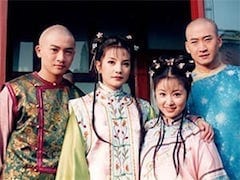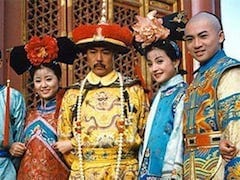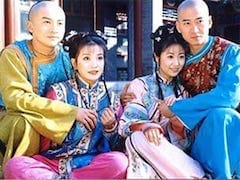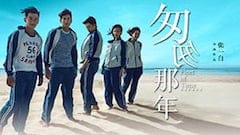Xưa xem phim Hoàn Châu cách cách, Tiểu Yến Tử sau khi học Tam tự kinh (kinh 3 chữ) thì tiếp tục học sử dụng thành ngữ 4 chữ. Đây là khởi đầu của vô số màn hài hước đặc sắc trong phim, vì Tiểu Yến Tử thì siêu dốt về chữ nghĩa, mà thành ngữ 4 chữ trong cổ văn TQ có đến hàng vạn vạn 😬. Chỉ riêng những thành ngữ bắt đầu với chữ “nhất” cũng có đến 3 ngàn, học 1 chữ “nhất” này cả năm cũng chưa hết, ví dụ như:
Nhất ngôn vi định, nhất phàm phong thuận, nhất nhật tam thu, nhất phiến băng tâm, nhất tự thiên kim, nhất đao lưỡng đoạn, nhất bản vạn lợi, nhất bộ đăng thiên, nhất ngôn nan tận, nhất ngôn cửu đỉnh, nhất hô bách ứng, nhất diệp tri thu, nhất lộ bình an, nhất tiễn song điêu, nhất cử lưỡng tiện, nhất thạch nhị điểu, nhất thế chi hùng, nhất kiến như cố, nhất quốc tam công, nhất triêu nhất tịch, nhất tảo nhi không, nhất tự vi sư, etc…
Cái sự dốt của Tiểu Yến Tử được sử dụng làm yếu tố gây cười xuyên suốt phim, đồng thời với khán giả mà nói, cũng là một công cụ giáo dục. Thành ngữ 4 chữ rất phổ biến trong cổ văn TQ, đôi khi cả đoạn văn dài dùng toàn thành ngữ, nghe cân đối, nhịp nhàng, ngắn gọn, súc tích. Ngay cả khi không dùng thành ngữ thì thói quen dùng cụm 4 từ cũng rất phổ biến trong hành văn cổ, như thế nghe mới có vẻ “có học thức” và “sang trọng”.
Con đường đào tạo từ một cô gái mãi võ giang hồ trở thành một công chúa quý tộc phải trãi qua rất nhiều chông gai, đầu tiên là những bước giáo dục cơ bản này. Mặc dù chưa bao giờ thật sự thích xem những kiểu phim drama như Hoàn Châu cách cách, nhưng vẫn xem để học thêm về cổ văn (tốt nhất nên xem phụ đề tiếng Trung). Dưới đây là một số thành ngữ 4 chữ phổ biến thường sử dụng trong phim kiếm hiệp, cổ trang:
牛嚼牡丹 – Ngưu tước mẫu đơn – Bò ăn hoa mẫu đơn
猫哭老鼠 – Miêu khốc lão thử – Mèo khóc chuột già
笑里藏刀 – Tiếu lý tàng đao – Dấu dao trong nụ cười
海里捞针 – Hải lý lao châm – Mò kim đáy bể
班门弄斧 – Ban môn lộng cân – Múa rìu trước cửa Lỗ Ban
借刀杀人 – Tá đao sát nhân – Mượn đao giết người
冤家路窄 – Oan gia lộ trách – Ngõ hẹp gặp oan gia
水中捞月 – Thủy trung lao nguyệt – Mò trăng đáy nước
打草惊蛇 – Đả thảo kinh xà – Đánh cỏ động rắn
对牛弹琴 – Đối ngưu đàn cầm – Đàn gảy tai trâu
过河拆桥 – Quá hà sách kiều – Qua cầu rút ván
落叶归根 – Lạc diệp quy căn – Lá rụng về cội
亡羊补牢 – Vong dương bổ lao – Mất bò mới lo làm chuồng
守株待兔 – Thủ chu đãi thố – Ôm cây đợi thỏ
顺水推舟 – Thuận thuỷ thôi chu – Thuận nước đẩy thuyền
以卵击石 – Dĩ noãn kích thạch – Lấy trứng chọi đá
走马观花 – Tẩu mã quan hoa – Cưỡi ngựa xem hoa
斩草除根 – Trảm thảo trừ căn – Nhổ cỏ tận gốc
一箭双雕 – Nhất tiễn song điêu – 1 mũi tên trúng 2 đích
半斤八两 – Bán cân bát lượng – Kẻ tám lạng, người nửa cân
不共戴天 – Bất cộng đái thiên – Không đội trời chung
不可思谊 – Bất khả tư nghì – “Không thể giảng cho hiểu được”
闭月羞花 – Bế nguyệt tu hoa – Hoa nhường nguyệt thẹn
甘拜下风 – Cam bái hạ phong – Cam chịu nhận thua
指腹为婚 – Chỉ phúc vi hôn – Hứa hôn từ trong bụng mẹ
孤掌难鸣 – Cô chưởng nan minh – 1 bàn tay vỗ không thành tiếng kêu
强词夺理 – Cưỡng từ đoạt lý – Nguỵ biện, nói xàm xí
造极登峰 – Tạo cực đăng phong – Đạt tới đỉnh cao
同归于尽 – Đồng quy vu tận – Cả 2 cùng chết
一帆风顺 – Nhất phàm phong thuận – Thuận buồm xuôi gió
拔刀相助 – Bạt đao tương trợ – Rút đao giúp đỡ
衣锦还乡 – Y cẩm hoàn hương – Áo gấm về làng
掩耳盗铃 – Yểm nhĩ đạo linh – Bịt tai trộm chuông
恒河沙数 – Hằng hà sa số – Nhiều như số hạt cát bên bờ sông Hằng
木已成舟 – Mộc dĩ thành chu – Ván đã đóng thuyền
锦衣夜行 – Cẩm y dạ hành – Áo gấm đi đêm
饮水思源 – Ẩm thuỷ tư nguyên – Uống nước nhớ nguồn
流沙掌中 – Lưu sa chưởng trung – Cát chảy trong lòng bàn tay
望子成龙 – Vọng tử thành long – Mong con thành tài
传宗接代 – Truyền tông tiếp đại – Nối dõi tông đường
反复无常 – Phản phục vô thường – Thường xuyên thay đổi
了如指掌 – Liễu như chỉ chưởng – Rõ như trong lòng bàn tay
幸灾乐祸 – Hạnh tai lạc hoạ – Cười trên nỗi đau của người khác
狐假虎威 – Hồ giả hổ uy – Cáo mượn oai hùm
两全其美 – Lưỡng toàn kỳ mỹ – Vẹn cả đôi đường
措手不及 – Thố thủ bất cập – Trở tay không kịp
望梅止渴 – Vọng mai chỉ khát – Trông mơ giải khát, ăn bánh vẽ
一刀两断 – Nhất đao lưỡng đoạn – Chém 1 đao thành 2 khúc
夜长梦多 – Dạ trường mộng đa – Đêm dài lắm mộng
炉火纯青 – Lô hoả thuần thanh – Lửa trong lò toàn 1 màu xanh
同床异梦 – Đồng sàng dị mộng – Chung giường nhưng khác mộng
失之毫厘,差之千里 – Thất chi hào ly, sai chi thiên lý
宁为玉碎,不为瓦全 – Trữ vi ngọc toái, bất vi ngoã toàn
良药苦口,忠言逆耳 – Lương dược khổ khẩu, trung ngôn nghịch nhĩ
道高一尺,魔高一丈 – Đạo cao nhất xích, ma cao nhất trượng
处女守身,处士守名 – Xử nữ thủ thân, xử sĩ thủ danh
英雄气短,儿女情长 – Anh hùng khí đoản, nhi nữ tình trường
近朱者赤,近墨者黑 – Cận chu giả xích, cận mặc giả hắc
近在眼前,远在天边 – Cận tại nhãn tiền, viễn tại thiên biên
龙生九子,各不相同 – Long sinh cửu tử, các bất tương đồng
永结同心,百年好合 – Vĩnh kết đồng tâm, bách niên hảo hợp
江山异改,本性难移 – Giang sơn dị cải, bản tính nan di
白刀子进,红刀子出 – Bạch đao tử tiến, hồng đao tử xuất
君子报仇,十年不晚 – Quân tử báo cừu, thập niên bất vãn
十年树木,百年树人 – Thập niên thụ mộc, bách niên thụ nhân
狗口里生,不出象牙 – Cẩu khẩu lý sinh, bất xuất tượng nha
老鼠看书,咬文嚼字 – Lão thử khán thư, giảo văn tước tự
青山不改,泉水长流,后会有其 – Thanh sơn bất cải, tuyền thuỷ trường lưu, hậu hội hữu kỳ















